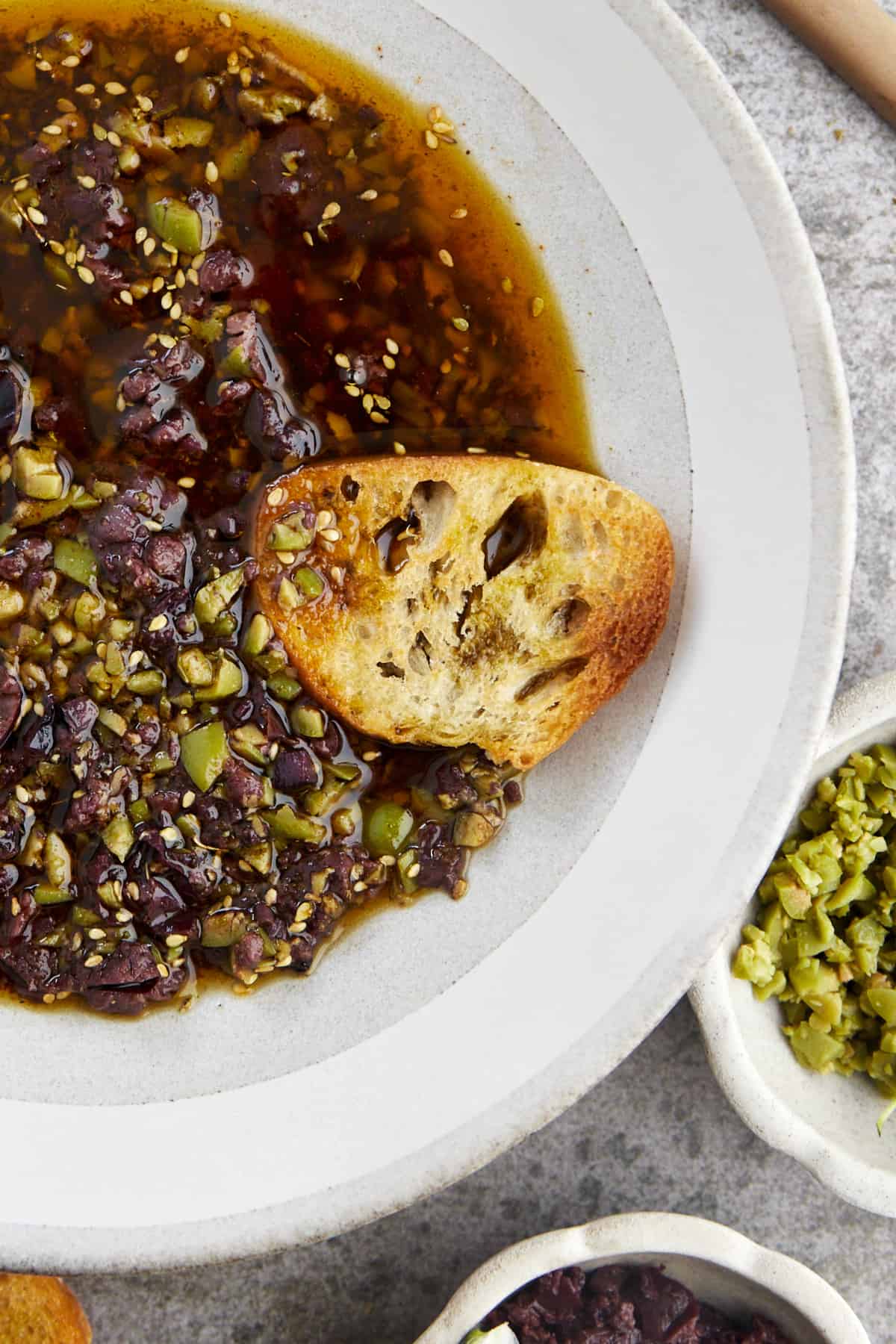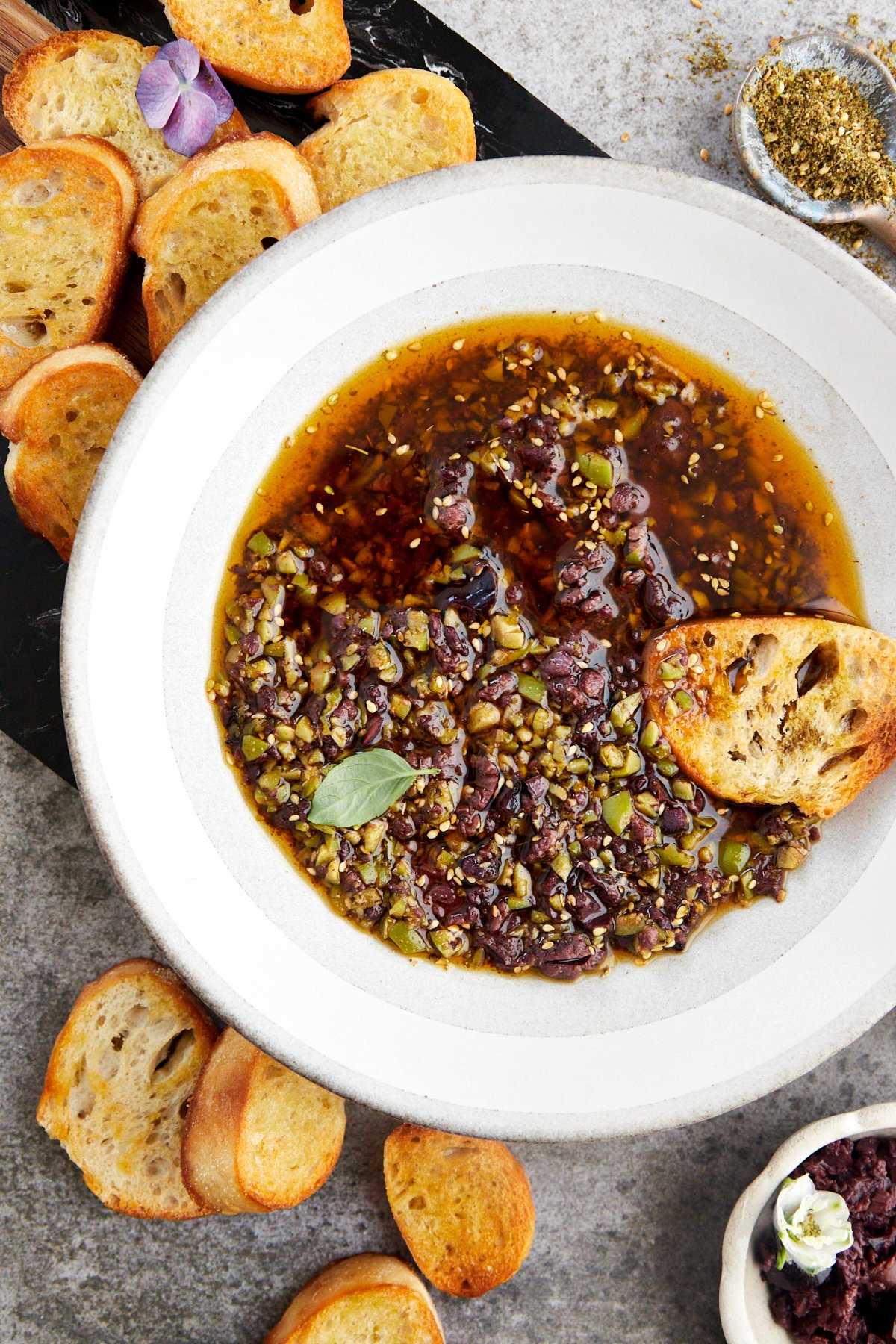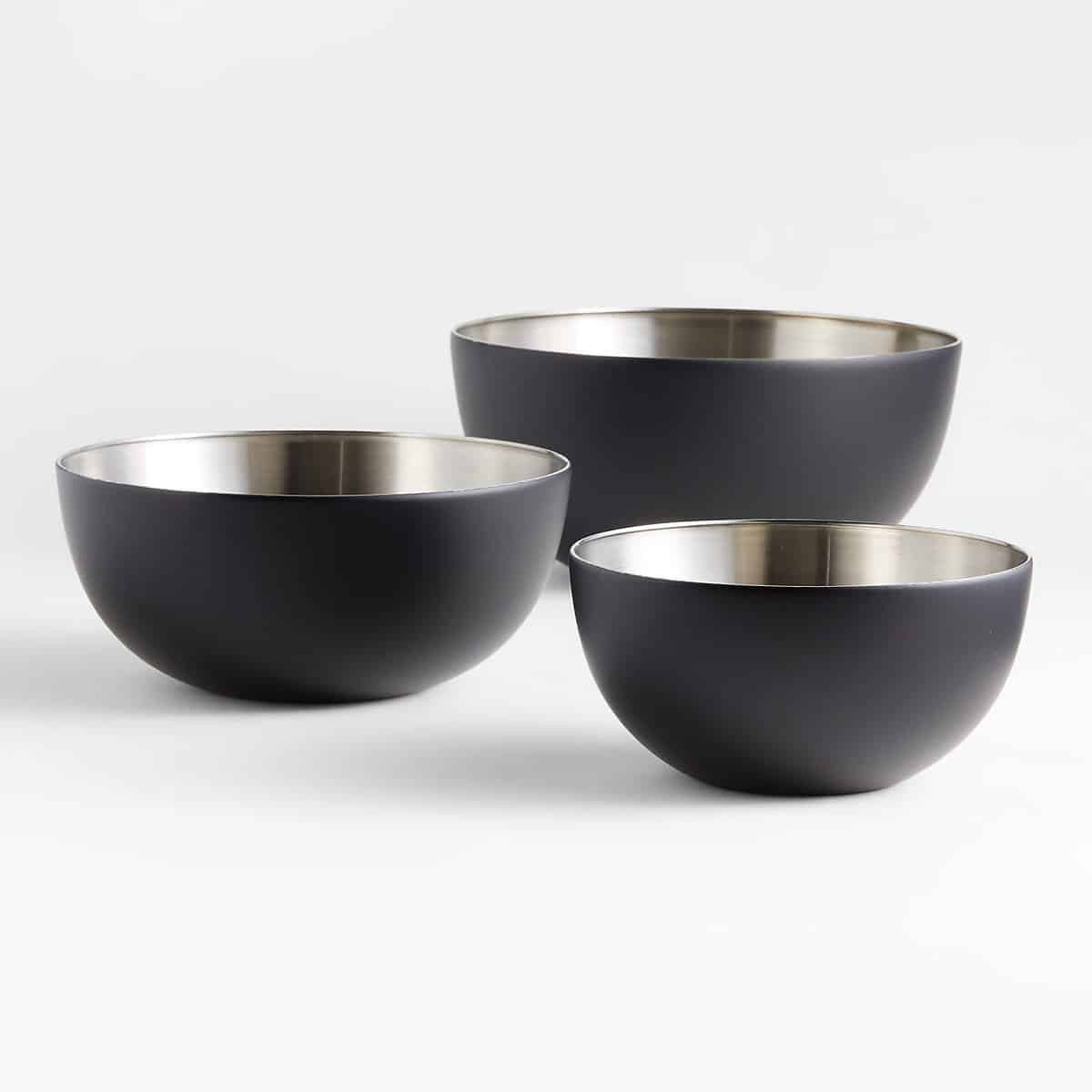Savory and made with just a little spice, this restaurant-inspired Bread Dipping Oil is a life-changing way to elevate any meal! Whip it up in minutes and serve it as an appetizer or snack with a side of thick, crusty bread or cheesy focaccia.

Table of Contents
What Is Bread Dipping Oil?
This recipe is exactly what it sounds like! You know those bowls of spiced oil they bring you at fancy restaurants? Yeah, that’s what we’re talking about with this homemade olive oil bread dip! You’re now going to believe how easy it is to make.
Whether you’re planning an intimate at-home date night, gearing up for a festive holiday party, or hosting a casual family gathering, this Bread Dipping Oil is perfect for the occasion! Prepare to dazzle your guests with your newfound culinary prowess – it’ll be our little secret just how quick and easy this dip is to make.
Of course, everyone has their own twist on this dip. However, we stuck with classic Middle Eastern-inspired flavors and just a little spice. One bite and you’ll be in love!
What’s In Olive Oil Bread Dip?
For this olive oil dip for bread, we stuck with a classic oil base and spruced it up with a little Middle Eastern flair! Here’s what you need:
- Olive Oil – This is the star of the show! Because there are so few ingredients you really want to splurge on a high-quality extra virgin olive oil for a smooth taste and rich, bold flavor that shines.
- Olives – We used a combination of Kalamata and green olives for a salty taste that pairs amazingly with sweet bread.
- Flavor Enhancers – Here’s where we get creative! Unlike other bread dipping oil recipes that just use a dash of garlic, we took things up a notch using fresh garlic, dried oregano, smoked paprika, and za’atar seasoning!
How to Make the Best Olive Oil Dip for Bread
Get ready for a double win – not only is this bread dipping oil one of the tastiest appetizers you’ll ever make, but it’s also one of the easiest, too! Here’s your foolproof guide on what to do:
- Combine. Add all the ingredients to a large, shallow bowl, and carefully whisk to combine.
- Serve. Pair your olive oil bread dip with pita, baguette, focaccia, or any bread you like best.
That’s it! Seriously. Recipes don’t get better than this.
Tips and Tricks
- Diced Small. Make sure to dice the olives super small so you get little pieces in every bite, and stir so they’re well combined.
- Serve Fresh. Enjoy this olive oil dip for bread right away while the ingredients are still well combined and at room temperature.
- Add Oil. As you eat, you may find that you begin to run out of oil and are left with just olives and seasonings. No worries! Just stir in extra oil as needed to spruce it back up, and it will be as good as new!

Serving Suggestions
Clearly, given the name olive oil bread dip, this bread dipping oil is best enjoyed with all your favorite breads. From whole wheat pita to olive cheese bread, and even garlic caprese bread, you really can’t go wrong. I mean, YUM!
However, if you’re looking for an appetizer that’s a little lighter in carbs, you can also pair this recipe with items like:
- Carrots or Celery Sticks
- Sliced Cucumbers
- Cubes of Cheese
- Marinated Artichokes
It even tastes incredible when used as a salad dressing!
Should You Refrigerate Olive Oil Bread Dip?
Yes, with the addition of fresh garlic, this dip should be placed in an airtight container and stored in the fridge for up to 2 weeks. Or, if you want it to last longer, leave out the garlic, and keep your dip refrigerated for up to 1 month.
More Crowd-Pleasing Dip Recipes
Whether you’re in the mood for an afternoon snack or aiming to impress a crowd with a stellar appetizer spread, these dips and spreads are a must-try!
- Spinach Olive Dip
- Eggplant Dip
- White Bean Dip with Roasted Tomatoes
- Roasted Red Pepper Feta Dip with Crispy Chickpeas

Easy Bread Dipping Oil Recipe
Ingredients
- 1 cup extra virgin olive oil
- 1/2 cup Kalamata olives finely chopped
- 1/2 cup green olives finely chopped
- 2 teaspoons za’atar seasoning
- 1 teaspoon dried oregano
- 1 teaspoon smoked paprika
- 1 clove garlic grated
Instructions
- Add all the ingredients to a bowl. Whisk to combine.1 cup extra virgin olive oil, 1/2 cup Kalamata olives, 1/2 cup green olives, 2 teaspoons za’atar seasoning, 1 teaspoon dried oregano, 1 teaspoon smoked paprika, 1 clove garlic
- Serve with pita or baguette for dipping.
- Store in an airtight container in the fridge for up to 2 weeks.
Would you like to save this? 🔖
Nutrition
Nutrition information is automatically calculated, so should only be used as an approximation.













